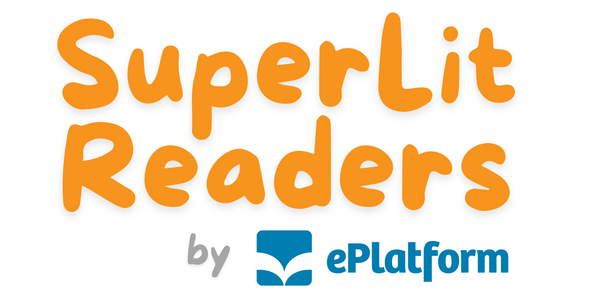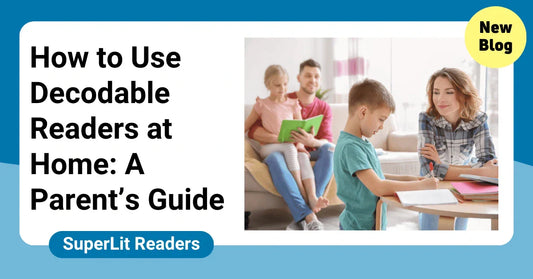Debunking the 5 Biggest Myths About Decodable Readers

🕐 Estimated reading time: 8 minutes | Last updated: July 2025
Decodable readers are one of the most talked-about tools in early literacy right now, and that means a lot of myths get repeated in schools, staffrooms, and parent groups.
Some teachers across New Zealand think decodable readers limit students, while others wonder if they’re too repetitive or boring. But done well, systematic synthetic phonics plus high-quality decodable readers build the foundation every young reader needs.
Let’s clear up five common myths about decodable readers, so you can feel confident using them in your phonics classroom or at home.
Table of Contents
- Separating Fact from Fiction About Decodable Readers
- Decodable Readers Are Boring
- Students Get Stuck on Decodable Readers Forever
- Decodable Readers Don’t Help with Comprehension
- Decodable Readers Are Only for Struggling Readers
- There’s No Room for Real Stories
- Final Thoughts
Separating Fact from Fiction About Decodable Readers
Decodable readers spark strong opinions, some teachers swear by them, others have doubts, and parents often hear mixed messages. But the truth is, when used well, decodable readers are one of the most reliable tools for building strong, confident early readers in any primary school.
A lot of the confusion comes from myths that get repeated without context. By clearing up these myths, you can make smarter choices about how to use decodable readers alongside your phonics teaching and other books at home or in the classroom.
Myth 1 — Decodable Readers Are Boring
Some teachers and parents worry that decodable readers are repetitive or dull for students. But here’s the reality: when used well, decodable readers are an engaging, confidence-building tool in any primary school classroom. Because they match exactly what children are learning in their systematic phonics program, decodable readers actually empower kids to decode real words independently, which feels exciting, not boring.
Today’s decodable books are far from dry drills. Many are packed with fun storylines, relatable characters, humour, and simple plots that motivate young readers to keep going. When students see they can read a whole book by themselves, their motivation soars.
If your decodable readers feel flat, it might be time to refresh your collection or choose books that align more closely with your phonics scope and sequence. The right match keeps reading fresh and meaningful.
Myth 2 — Students Get Stuck on Decodable Readers Forever
One common myth is that once students start reading decodable readers, they get stuck there and never move on to authentic books. In reality, the whole purpose of decodable readers is to help children move beyond them, not stay in them forever.
Decodable readers are like training wheels: they give students the practice they need to master phonics skills step by step. Once children can confidently decode most words, teachers gradually blend in richer texts, like levelled readers, non-fiction books, and authentic stories that expand comprehension and vocabulary.
Good phonics teaching always plans for this transition. It’s about knowing when to move students on, while still having decodable readers on hand for extra practice when needed.
Myth 3 — Decodable Readers Don’t Help with Comprehension
Some people think decodable readers only focus on sounding out words and do nothing for comprehension. But that’s not true. Decodable readers are an essential part of a balanced literacy approach because they free up brainpower for understanding.
When students don’t have to guess words or stumble through text far above their skill level, they can actually think about what they’re reading. Well-designed decodable books build meaning into short, simple sentences and use illustrations that support understanding.
Teachers in New Zealand can boost comprehension by asking questions, encouraging students to retell the story, or discussing characters and settings. Even better, this practice builds habits students carry into more complex texts later on.
Myth 4 — Decodable Readers Are Only for Struggling Readers
It’s easy to assume that decodable readers are only helpful for students who find reading difficult. The truth? Every beginner reader benefits from books that match their phonics knowledge, whether they pick up skills quickly or need extra support.
Synthetic phonics is proven to work best when every child has the right text to practise with. If we skip decodable readers for stronger students, we risk gaps in phonics knowledge that show up later. Decodable readers provide all students with a clear, achievable path from decoding to fluency.
This is especially true for students in the early years, EAL learners, and even older students who need to revisit phonics skills to catch up.
Myth 5 — There’s No Room for Real Stories
Some teachers worry that using decodable readers means students miss out on authentic, interesting books. But systematic phonics programs are not either/or, it’s about using decodable readers and real books in the right balance.
High-quality literacy instruction in New Zealand combines decodable readers for daily practice with rich, authentic texts for read-alouds, classroom discussions, and independent reading when students are ready. This blend keeps students practising new phonics patterns while exploring language, ideas, and vocabulary beyond what decodables alone can offer.
You don’t have to choose: decodable readers are one part of an effective, comprehensive reading journey.
Final Thoughts
Decodable readers aren’t a magic bullet, but they’re far from boring, restrictive, or unnecessary. Used properly, they help students master systematic phonics, build confidence, and develop the skills they need to tackle more complex books.
Want to see how SuperLit Readers can support your school or home reading routine? Explore our complete range of engaging decodable readers designed to align with any phonics scope and sequence.




